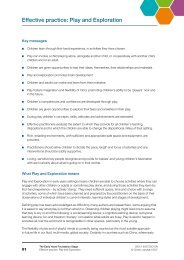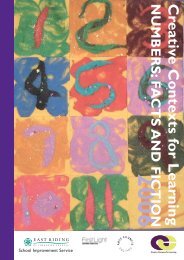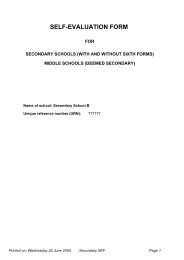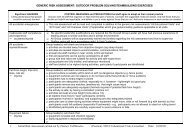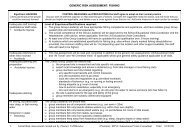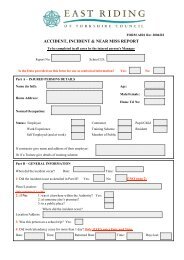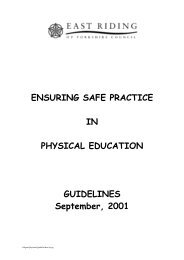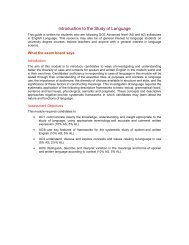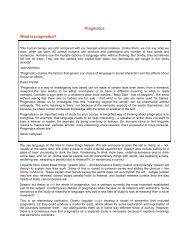Overcoming barriers in mathematics - helping children move from ...
Overcoming barriers in mathematics - helping children move from ...
Overcoming barriers in mathematics - helping children move from ...
You also want an ePaper? Increase the reach of your titles
YUMPU automatically turns print PDFs into web optimized ePapers that Google loves.
16 The National Strategies | Primary<strong>Overcom<strong>in</strong>g</strong> <strong>barriers</strong> <strong>in</strong> <strong>mathematics</strong> –help<strong>in</strong>g <strong>children</strong> <strong>move</strong> <strong>from</strong> level 2 to level 3Measur<strong>in</strong>g strandYear 3 objectives Year 4 objectives <strong>Overcom<strong>in</strong>g</strong> <strong>barriers</strong> sequencesKnow the relationships between kilometresand metres, metres and centimetres, kilogramsand grams, litres and millilitres; choose and useappropriate units to estimate, measure and recordmeasurementsChoose and use standard metric units and theirabbreviations when estimat<strong>in</strong>g, measur<strong>in</strong>g andrecord<strong>in</strong>g length, weight and capacity; know themean<strong>in</strong>g of ‘kilo’, ‘centi’ and ‘milli’ and, whereappropriate, use decimal notation to recordmeasurements (e.g. 1.3 m or 0.6 kg)■■Can I expla<strong>in</strong> the relationships betweenkilometres and metres, metres and centimetres,kilograms and grams, litres and millilitres?Read, to the nearest division and half-division,scales that are numbered or partially numbered;use the <strong>in</strong>formation to measure and draw to asuitable degree of accuracyInterpret <strong>in</strong>tervals and divisions on partiallynumbered scales and record read<strong>in</strong>gs accurately,where appropriate to the nearest tenth of a unit■■Can I expla<strong>in</strong> what each division means on anumbered or partly numbered l<strong>in</strong>e and usethis <strong>in</strong>formation to read a scale to the nearestdivision or half-division?Draw rectangles and measure and calculate theirperimeters; f<strong>in</strong>d the area of rectil<strong>in</strong>ear shapesdrawn on a square grid by count<strong>in</strong>g squaresRead the time on a 12-hour digital clock and to thenearest 5 m<strong>in</strong>utes on an analogue clock; calculatetime <strong>in</strong>tervals and f<strong>in</strong>d start or end times for a giventime <strong>in</strong>tervalRead time to the nearest m<strong>in</strong>ute; use am, pm and12-hour clock notation; choose units of time tomeasure time <strong>in</strong>tervals; calculate time <strong>in</strong>tervals<strong>from</strong> clocks and timetables■■■■Can I read the time to the nearest 5 m<strong>in</strong>uteson an analogue clock us<strong>in</strong>g the correctvocabulary?Can I show on a digital clock a time given tome on an analogue clock, and the other wayround?■■Can I work out how long it is between twotimes?00099-2008BKT-EN© Crown copyright 2008



